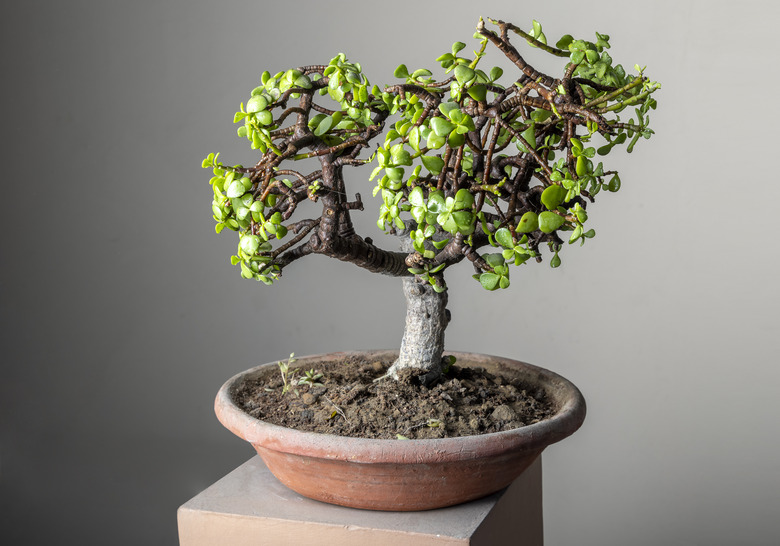Should Jade Plants Be Grown In Shade Or Sun?
We may receive a commission on purchases made from links.
To keep a jade plant (Crassula ovata, USDA hardiness zones 11-12) healthy, it's important to understand the growing conditions of its natural habitat so that you can recreate the environment at home or in your office. Having the appropriate amount of type of sunlight can help your jade plant thrive. They make popular houseplants because they're easy-care and don't require much watering.
Tip
Jade plants need lots of bright sunlight daily. Young jade plants do best in bright, indirect light while established plants grow well with at least four hours of direct sunlight daily.
Native Habitat of Jade Plants
Native Habitat of Jade Plants
Hillside slopes in South Africa are the native habitat of jade plants where they grow in abundance and can reach 10 feet tall. Summers are hot and during this time, the plants receive very little rainfall with very dry soil. During winter when cooler temperatures arrive, jade plants produce clusters of small star-shaped flowers that are half an inch wide and smell of scented soap.
Surviving Without Water
Surviving Without Water
Jade plants can survive long periods without water due to a feature that enables them to conserve water and energy. Small pores on their leaves absorb carbon dioxide during the night, and this is converted into sugar using the sun. During the day, leaf pores close to stop the water and carbon dioxide from evaporating.
Jade Plant Location
Jade Plant Location
While some indoor plants end up with burned leaves in direct sunlight, mature jade plants can handle the direct light. Established jade plants should get at least four hours of direct sunlight daily. If you have a new plant, find a location with bright but indirect sunlight.
Place jade plants in a sunny place, such as a bright windowsill of a south-facing window. If young plants are placed too close to the window, the glass intensifies the light and heat, which can burn plants. Water sparingly and never position them in the shade.
They can be placed outside on patios, but they need to be brought inside in autumn and winter to avoid frosts. They can withstand cold temperatures to just above freezing. An ideal outdoor location is one with direct sunlight in the morning with protection from harsh afternoon sun.
Indoor temperatures should be between 65 and 75 degrees Fahrenheit for ideal growth. They like cooler nighttime and winter temperatures and can handle temperatures down to 55 F.
Choose winter locations carefully. Placing the plant near a cold window can hurt it. Be aware of drafts from windows or heating and cooling vents that might cause temperature fluctuations.
Jade Plant Propagation
Jade Plant Propagation
It's very easy to propagate a jade plant. Simply place a single leaf against the side of a pot filled with soil, with its leaf base touching the soil, and water sparingly. Repot jade plants into larger pots every three years in houseplant compost that is mixed with one-third sand or grit. A good choice is using soilless potting mix that's blended for succulent plants.
Caring for Jade Plants
Caring for Jade Plants
Although they like a tight fit in pots, it's important not to the restrict growth of jade plants by growing them in flower pots too small for their size. Don't get disheartened if you have a jade plant and it doesn't flower, because they rarely bloom as a houseplant.
Although they typically are tough plants that require little watering, jade plants can suffer from mealy bugs. Look out for white "fluff" underneath leaves and in crevices on the plant. The fluff is in fact lots of little mealy bugs that group together and stick themselves to leaves and stems. If left to multiply, they can inhibit the growth of the plant. Treat mealy bugs by rubbing the affected areas gently with an alcohol-dipped swab.
Always pick off dead leaves or trim them with pruning shears to clean up the plant. Jade pruning should happen in spring and early summer ideally. Occasionally clean jade plants to remove dust by putting them in the shower or leaving them outside in the rain.
